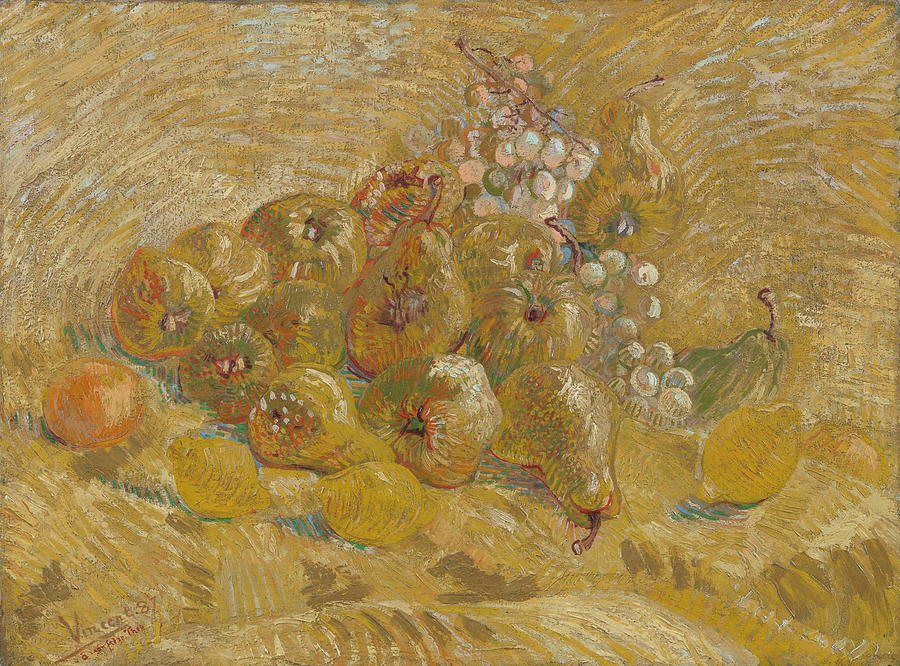
“It’s better that we feel something for each other rather than behave like corpses... when one lives with others and is bound by a feeling of affection, one is aware that one has a reason for being.”
- Vincent van Gogh in a letter to his brother Theo -
Vincent van Gogh envisioned the South of France as a sanctuary where creativity and deep connections could flourish, nurturing both artistic vision and personal relationships. Enrich your experience at Poets and Lovers with a musical journey through the works of celebrated composers from Van Gogh’s time in France, alongside classical pieces inspired by his art and themes of love and companionship.
In addition to the inspiration he drew from his surroundings, Van Gogh's career was significantly shaped by the unwavering support of his brother Theo. Throughout Vincent’s challenging career, Theo provided essential emotional and financial support, allowing Vincent to pursue his art despite frequent doubts. Their profound bond was instrumental, as Vincent shared with his sister Willemien, "If I didn’t have Theo it wouldn’t be possible for me to do justice to my work, but because I have him as a friend I believe that I’ll make more progress and that things will run their course." The two brothers and best friends appreciated art and culture together, regularly attending concerts of Richard Wagner in Paris. Listen along with the exclusive playlist to hear some of Wagner's iconic pieces that moved them.
Despite their time together, the bustling pace of Paris began to wear on Vincent, prompting him to leave for Arles in the South of France in early 1888. Yet, once there, he found himself missing the camaraderie of his artistic friends. Their passionate debates about art continued, however, through a lively exchange of letters. Vincent wrote to Theo: “During the journey I thought at least as much about you as about the new country I was seeing.” Though several of Vincent’s friends considered joining him in Arles, only the artist Paul Gauguin made the trip—persuaded by Theo’s promise of financial support.
"So Gauguin’s coming; that will make a big change in your life. I hope that your efforts will succeed in making your house a place where artists will feel at home."
- Theo in a letter to his brother Vincent -
Vincent first met Paul Gauguin at the end of 1887, shortly after Gauguin returned from his journey to Martinique. The two artists quickly bonded, exchanging paintings and deepening their connection. Vincent’s brother Theo was instrumental in promoting Gauguin’s work, featuring his paintings and ceramics at his gallery on Boulevard Montmartre. Among the pieces Theo acquired was The Mango Trees, Martinique.
While in Arles, Vincent envisioned creating an artists' studio with his friend. Knowing that Gauguin admired his sunflower paintings and eager for Gauguin’s arrival, Vincent painted several large sunflower canvases to decorate the Yellow House. The prospect of their collaboration took shape when Gauguin arrived and purchased a twenty-metre roll of coarse jute, which they both used to create their canvases. However, their collaboration soon turned contentious. Despite their mutual respect, disagreements over nearly everything led to heated discussions and a strained relationship. This culminated in the infamous incident where, in a fit of despair, Van Gogh cut off part of his ear. Gauguin’s portrayal of Van Gogh in The Painter of Sunflowers reflects this turbulent period. After Gauguin left Arles, they continued to correspond until Van Gogh’s death.
While not as dramatic as his relationship with Gauguin, Van Gogh formed many close relationships with artists and locals throughout his lifetime. In the South of France, he connected with Eugène Boch, Dodge MacKnight, and Christian Mourier-Petersen, and befriended Joseph Roulin, a postal official he painted six times. Following the infamous incident with his ear, Van Gogh voluntarily admitted himself to a psychiatric institution. During this time, Madame Ginoux, a local café owner, safeguarded his works, and Joseph Roulin maintained their friendship by writing to him regularly. After leaving the psychiatric ward, Vincent moved closer to his brother and settled in Auvers-sur-Oise, just outside of Paris. He placed his care in the hands of Dr. Paul Gachet, a homoeopathic physician and amateur painter. Dr. Gachet often spent time with Van Gogh, offering companionship and motivating him to keep painting until his untimely death.
Vincent van Gogh made deep connections during his lifetime and his influence continues to resonate long after his death. French composer Henri Dutilleux, inspired by Van Gogh’s Starry Night, created the orchestral work Timbres, espace, mouvement (ou, La nuit étoilée), which captures the painting's emotional depth with rich woodwinds and striking metallic percussion. Similarly, Don McLean’s 1971 song Vincent offers a contemporary tribute to Van Gogh’s vision and legacy. Explore and compare these tributes through your exclusive playlist, inspired by Van Gogh's meaningful relationships and enduring influence.
Building on this legacy, this exhibition invites you to delve into the themes of love and creativity in Van Gogh’s art from his time in Provence, France, from the evocative Poet’s Garden to intimate portraits of his friends and family. In celebration of The National Gallery’s 200th anniversary, it honours Van Gogh’s lasting influence and his significant contribution to art history. As a Corporate Member of the National Gallery, Crédit Agricole CIB embodies the principle of “Bringing People and Paintings Together.” This event highlights the enduring connection between Vincent Van Gogh's art and the individuals it inspires.